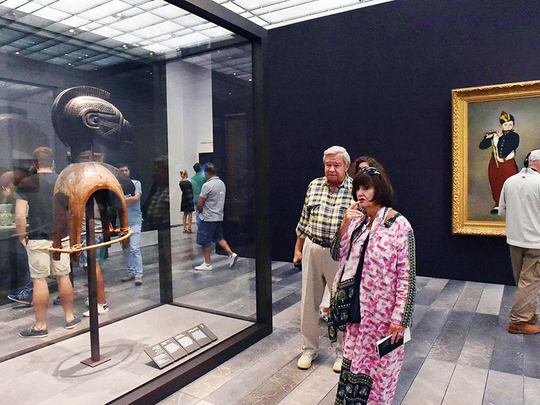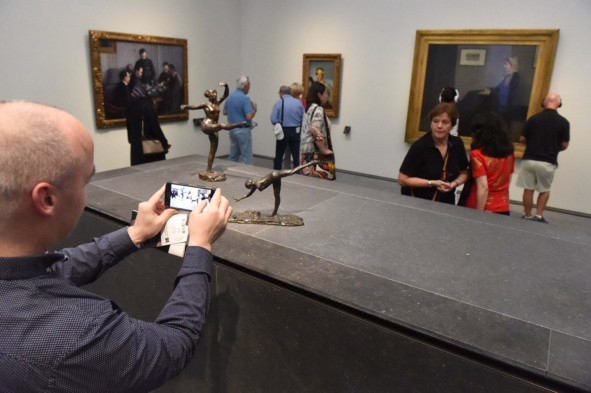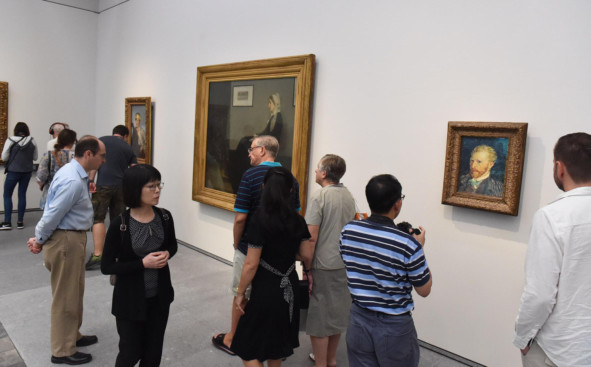
Abu Dhabi: The range of definitive masterpieces in A Modern World? leaves most visitors to the Louvre Abu Dhabi reeling. The gallery contains some of the earliest photographs taken by man, a host of pieces that heralded the arrival of modern sculpture, and a collection of the most well-known paintings today.
At the entrance, a glass case holds an 1843 photograph of Paris by one of the fathers of photography, Englishman William Henry Fox Talbot, next to other early photos.
Across from this are three of the museum’s most renowned pieces: Dutch painter Vincent Van Gogh’s ‘Self-Portrait’, American artist James McNeill Whistler’s 1871 piece known popularly as ‘Whistler’s Mother’, and ‘The Bohemian’ by French painter Edouard Manet. The three pieces hang next to one another, and keep museum visitors glued to their mastery and depth.
On the other end is Manet’s ‘The Fife Player’, an 1866 painting that once shocked the art world with its simplicity, subject’s frontal presentation and Japanese print influences. There is also ‘Children Wrestling’, an 1888 piece by long-underappreciated French artist, Paul Gauguin, ‘Saint-Lazare Train Station’ by French Impressionist Claude Monet, and ‘The Orchestra of the Opera’ by Frenchman Edgar Degas.
Other artistic movements are not ignored, with some wall space being dedicated to Indian ‘Company paintings’ that employed a Western treatment of perspective and shadow, and 1858 depictions of Mount Fuji by Japanese print master Utagawa Hiroshige. Ottoman intellectual and artist Osman Hamdi Bey’s ‘A Young Emir Studying’ also draws in passers-by with its vivid colours and details.
In a small room branching off from the main gallery, a towering plaster statue depicts a condemned man. This was crafted by Frenchman, Auguste Rodin, often called the progenitor of modern sculpture, as part of a larger piece known as ‘The Burghers of Calais’. Some of Rodin’s complex, smaller pieces are also encased in this space.
Given the abundance of famous artworks here, it is almost easy to walk past the handful of artefacts, yet these too offer evidence of humanity’s mounting acceptance of other cultures and norms.
Timings and entry fee: 10am-8pm on Saturday, Sunday, Tuesday, Wednesday; 10am-10pm on Thursday and Friday
Dh60: Adults
Dh30: 13-22 years
Dh30: Education professionals
Free entry: Children under 13. Members of Louvre Abu Dhabi’s Art Club loyalty programme, journalists, visitors with specials needs and their companions
Next: Challenging Modernity












